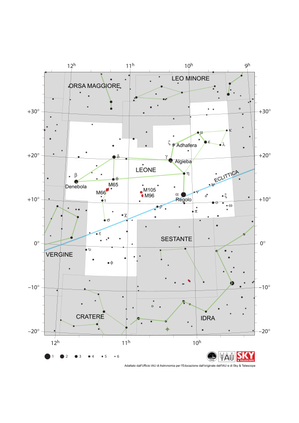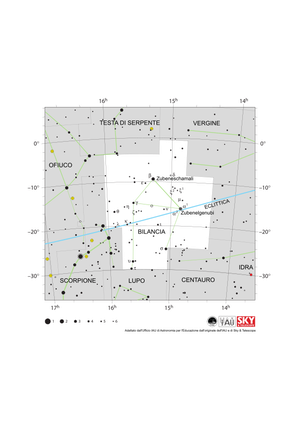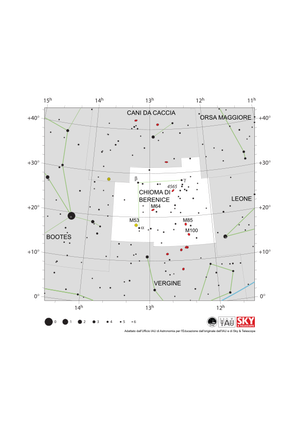Termine del Glossario Leone
Descrizione Il Leone è una costellazione dello Zodiaco, cioè le stelle che la compongono si trovano nella parte di cielo che interseca l'eclittica, con il piano definito dalle orbite dei pianeti del nostro Sistema Solare. Quindi, dal nostro punto di vista qui sulla Terra, possiamo trovare regolarmente i pianeti, e anche il Sole, in questa costellazione - nel caso del Sole dall'11 agosto al 17 settembre. (Nel cielo notturno, il Leone è più facile da osservare in primavera. È una delle 88 costellazioni moderne definite dall'Unione Astronomica Internazionale, e anche una delle 48 costellazioni classiche nominate dall'astronomo Claudio Tolomeo nel II secolo. La più luminosa delle numerose stelle luminose del Leone si chiama Regolo.
Termini correlati
Vedi questo termine in altre lingue
status del termine e della definizione La definizione originale di questo termine in inglese é stata approvata da un ricercatore astronomo e da un docente La traduzione di questo termine e della sua definizione sono ancora in attesa di approvazione
Il Glossario Multilingue OAE é un progetto dell'Ufficio IAU per la didatticadell'astronomia (OAE) in collaborazione con l'ufficio IAU OAO per la DivulgazioneAstronomica (OAO). I termini e le definizioni sono stater scelte, scritte eriviste da un impegno collettivo da parte di OAE, i Centri e i Nodi OAE e iCoordinatori Nazionali per la Didattica dell'Astronomia e da altri volontari.Potete trovare una lista completa dei crediti, Tutti i termini del glossarioE le definizioni sono pubblicate su Creative Commons CC BY-4.0 licenza e dovrebbero essere accreditate ad IAU OAE.
Se noti un errore di fatto o di traduzione in questo termine del glossario, per favore contattaci.
Diagrami correlati
Mappa della costellazione del Cancro
Crediti: Adattato dall'Ufficio IAU di Astronomia per l'Educazione dall'originale di IAU/Sky & Telescope
License: CC-BY-4.0 Creative Commons Attribuzione 4.0 Internazionale (CC BY 4.0) icone
Mappa della Costellazione del Leone
Crediti: Adattato dall'Ufficio IAU di Astronomia per l'Educazione dall'originale di IAU/Sky & Telescope
License: CC-BY-4.0 Creative Commons Attribuzione 4.0 Internazionale (CC BY 4.0) icone
Mappa della Costellazione della Vergine
Crediti: Adattato dall'Ufficio IAU di Astronomia per l'educazione dall'originale di IAU/Sky & Telescope
License: CC-BY-4.0 Creative Commons Attribuzione 4.0 Internazionale (CC BY 4.0) icone
Mappa della costellazione dell'Orsa Maggiore
Crediti: Adattato dall'Ufficio IAU di Astronomia per l'Educazione dall'originale di IAU/Sky & Telescope
License: CC-BY-4.0 Creative Commons Attribuzione 4.0 Internazionale (CC BY 4.0) icone
Mappa della Costellazione di Chioma di Berenice
Crediti: Adattato dall'Ufficio di Astronomia per l'Educazione della IAU dall'originale della IAU e di Sky & Telescope.
License: CC-BY-4.0 Creative Commons Attribuzione 4.0 Internazionale (CC BY 4.0) icone













